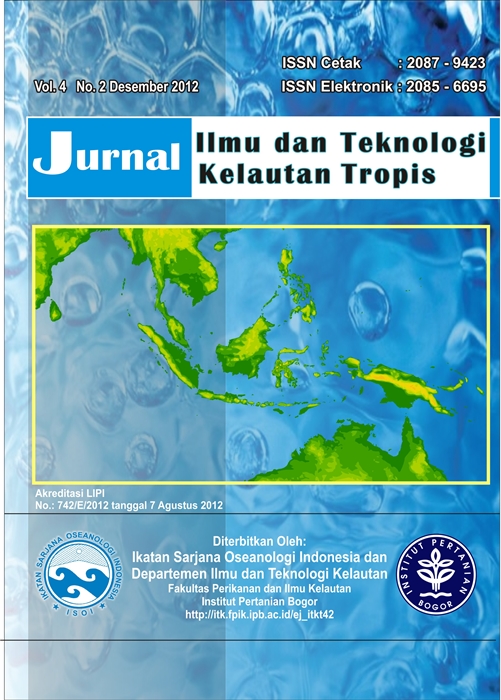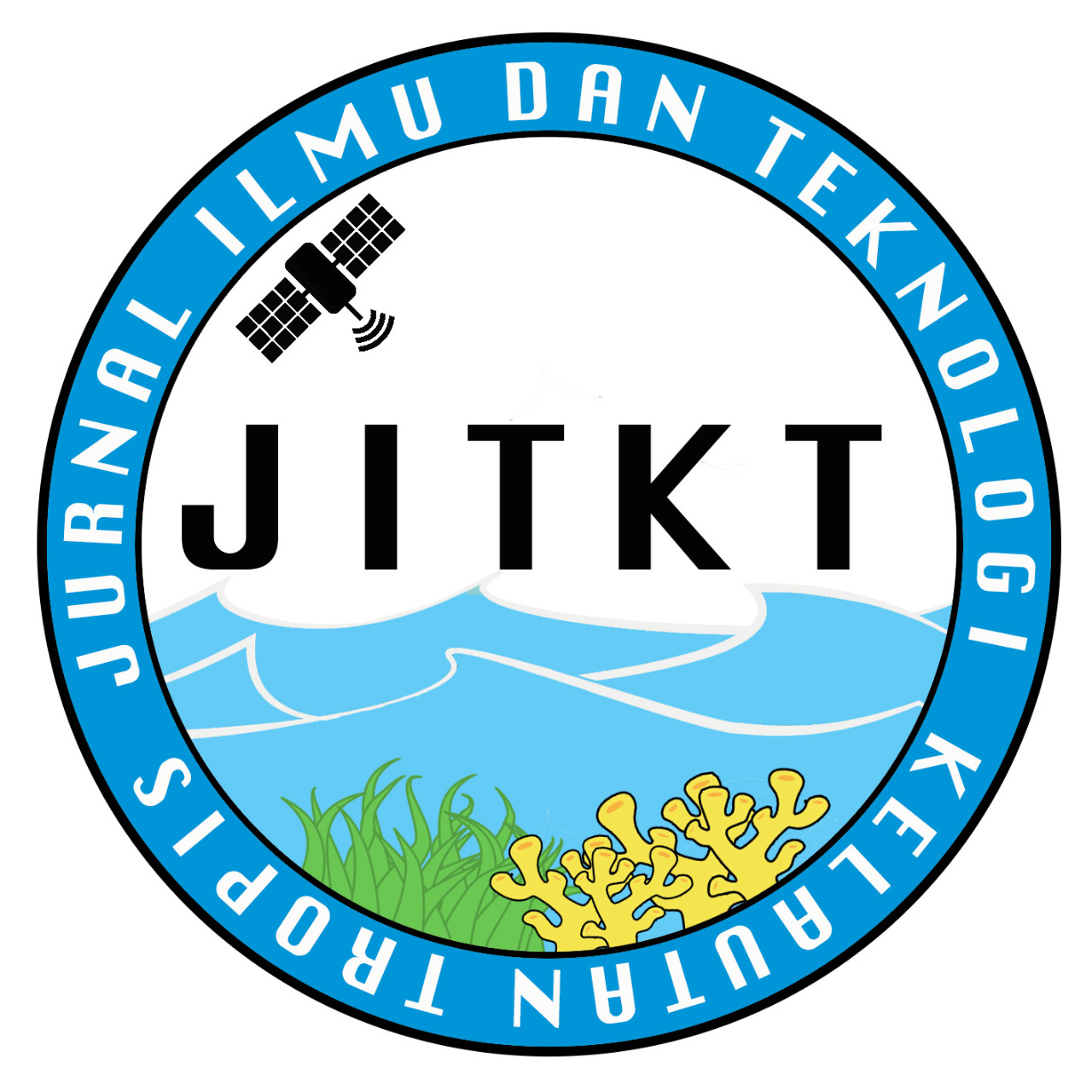EFFECT OF CALCIUM – PHOSPHOROUS WITH DIFFERENT RATIO ON NUTRIENT RETENSION AND CHANGES THE CHEMICAL COMPOSITION OF TIGER SHRIMP JUVENILE (Penaeus monodon FABR.)
Abstract
Calcium and phosphorous are two important minerals because of their functions for growth and bone mineralization as well as lipid and carbohydrate metabolisms. The study purposes were to determine the effects of calcium and phosphorus with different ratios of nutrient retention and chemical composition changes of juvenile shrimp body. Organism used in this experiment were juvenile tiger prawns with an average weight of 3.43 ± 0.05 g/fish. Stocking density was 6 fish per aquarium (size 60cmx50cmx40cm). This research was formulated according to completely randomized design with four treatments and three replicates. The treatments applied were the ratio of calcium and phosphorus in shrimp food i.e., A (Ca/P=1:0,5), B (Ca/P=1:1,0), C (Ca/P=1:1.5) and D (Ca/P=1:2,0 ). Food was served four times per day i.e. 07.00 AM, 11.00 AM, 15.00 PM, and 21.00 PM.. The juvenile tiger prawns maintained for 8 weeks. The results showed that calcium and phosphorus with different ratios in the diet did not give effect to the retention of nutrients include protein, fat, calcium, and phosphorus. While the provision of calcium and phosphorus in different ratios to changes in body chemical composition includes protein, fat and ash content of juvenile tiger prawns have a significant effect except for crude fiber and BETN not significant. The result indicated that the ratio of Ca and P with a value of 1:1.0 to 1:1.5 gave better effect in changing the chemical composition of juvenile shrimp body.
Keywords: tiger shrimp juvenile, retention of nutrients, chemical composition
Downloads
The author submitting the manuscript must understand and agree that the copyright of the article manuscript must be submitted/transferred to the Jurnal Ilmu dan Teknologi Kelautan Tropis. This work is licensed under the Creative Commons Attribution-ShareAlike 4.0 (CC BY-SA) International License in which the Author and Reader can copy and redistribute the material in any media or format, and remix, modify and build material for any purpose, but they must provide appropriate credit (citing articles or content), provide a link to the license, and indicate whether there is a change. If you mix, change, or create material, you must distribute your contribution under the same license as the original.



.png)














